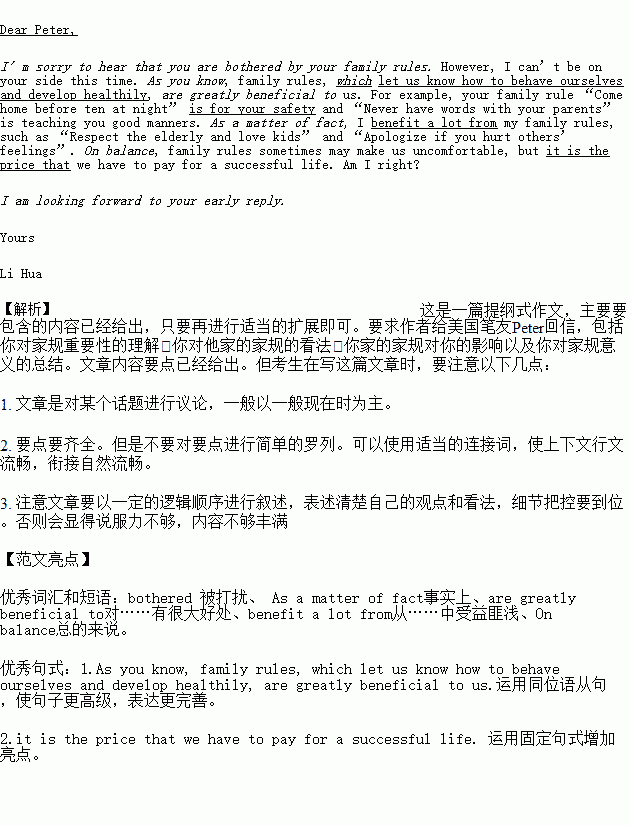题目内容
假如你是李华,你的美国笔友Peter发来邮件抱怨父母给他定了很多家规,如”晚上10点回家”;“不得与父母吵嘴”等。请给他写封回件,要点如下:
1.你对家规重要性的理解(行为礼貌、健康成长等);
2.你对他家的家规的看法;
3.你家的家规对你的影响(尊老爱幼、伤人道歉等);
4.你对家规意义的总结。
注意:1. 词数100左右;
2. 可适当增加细节,以使行文连贯;
3. 开头和结尾已给出,不计词数。
Dear Peter,
I’m sorry to hear that you are bothered by your family rules. _____________________________________
__________________________________________________________________________________________________________________________________________________________________________________________________________________________________________________________________________________________________________________________________________________________________________________________________________________________________________________________________________________________________________________________________________________________________________________________________________________________________________________________________________________________________________________
I am looking forward to your early reply..
Yours
Li Hua

